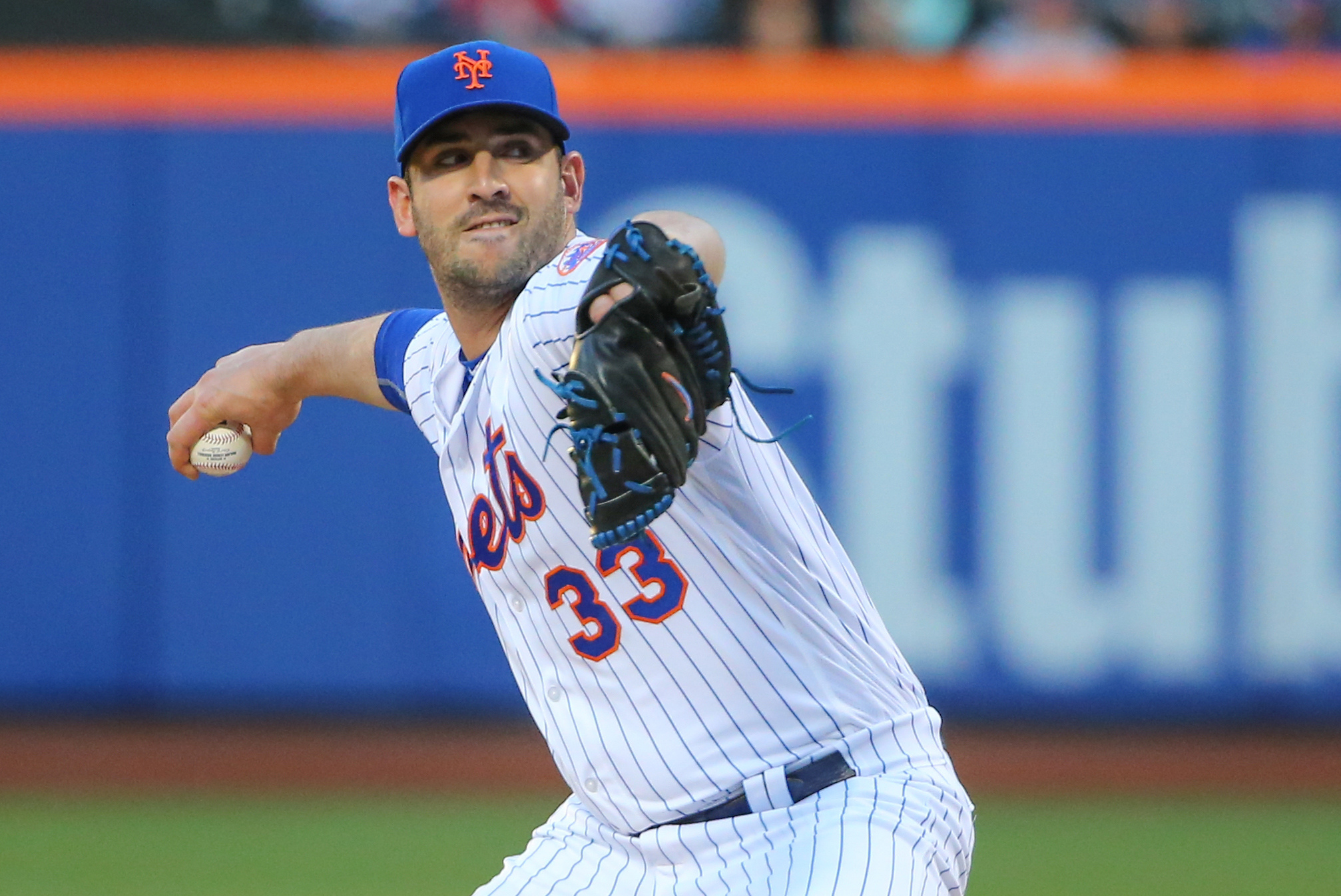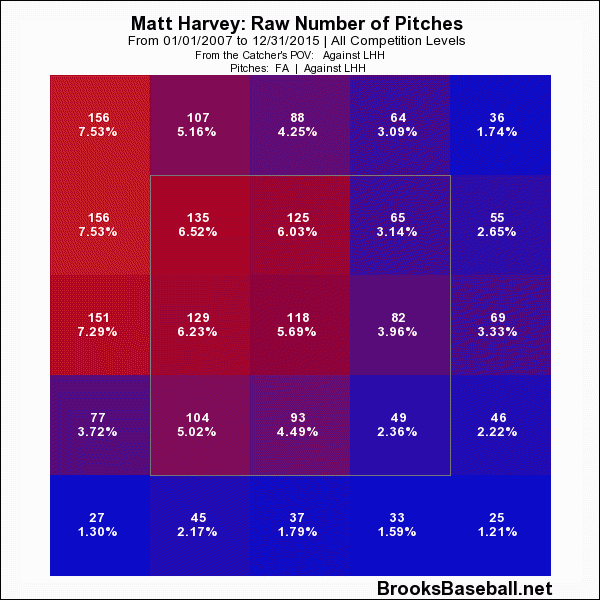Matt Harvey had, by any objective measure, his best start of the season the last time he stepped atop a mound. Pitching for the first time this season on his normal four days rest, Harvey held Cincinnati to just two runs in six innings, while striking out seven and walking just one. He threw more strikes than in any of his previous four starts, had his first Game Score this season over 50, and allowed just one extra-base hit, a leadoff homer to Zack Cosart, who was hitting .397 back then. After the game, Terry Collins said he thought the ball “came out of his hand much better, much cleaner tonight.”
For all the talk about how Harvey’s velocity has been noticeably down this season—and it certainly has been, no doubt about that—I think Collins is hitting on the more important point here. Harvey has been very hittable this season not only because his fastball and slider are both a couple of ticks down in MPH, but because his release has been off as compared to years past. To that end, Harvey hasn’t been locating his fastball as well as in his previous three big-league seasons and that has helped batters tee off as never before.
As expected, Harvey has historically posted better numbers against right-handed hitters than left-handed:
Career vs LHH: 923 PA, .211 AVG, .598 OPS, , 4.47 K/BB, 22 HR
Career vs RHH: 891 PA, .229 AVG, .585 OPS, 4.69 K/BB, 10 HR
But 2016 alone has not been as kind to Harvey:
2016 vs LHH: 66 PA, .304 AVG, .780 OPS, 2.17 K/BB, 1 HR
2016 vs RHH: 58 PA, .315 AVG, .721 OPS, 2.67 K/BB, 1 HR
Yikes.
Now, Harvey is a power pitcher. He throws his four-seamer 59.8 percent of the time (more than Chris Sale, Corey Kluber, and Stephen Strasburg) and at an average speed of 94.4 MPH (faster than Max Scherzer, Jake Arrieta, and Clayton Kershaw). Those are all very good things! It’s this specific skill set that has made him the very successful big-league pitcher he is today.
Except where are the fastballs being placed? Here is Harvey’s raw pitch locations for his career to lefties and righties:
Up and away to lefties. Middle and outside to righties. This is what a power pitcher’s heat map looks like. You can’t hit my fastball. I dare you.
Now, 2016:
It’s fairly clear that against lefties Harvey is slightly more middle-in this season, but the really glaring issue is that he’s simply not placing his fastballs to righties with the same kind of command that he has had in the past. As a result, batters on both sides of the plates are hitting Harvey at an unprecedented rate.
The good news for Mets fans is the “unprecedented” part. The rate at which batters are clubbing Harvey is simply too high—a .352 BABIP, 80 points above last year—to be sustainable. I don’t know if Harvey will make up the 1.5 MPH his fastball has lost between last season and this one, but it’s still the 10th fastest in all of MLB and that’s enough to keep him pitching like a No. 1. And even if the pitch placement still wasn’t great his last time out, Harvey’s velocity was noticeably up. That increased velo alone is good for a short-term patch, but the command is what will breed long-term success.
After bottoming out in Cleveland (five earned runs in 5 and 2/3 innings pitched) in mid-April, Harvey has followed that with two encouraging starts—first against Atlanta (two earned runs in five innings pitched), his opponent tonight at home, and then the aforementioned gem against the Reds—and our Spidey sense says he’s on his way to figuring this slump out. When Harvey does, it’ll be because he’s once again putting his fastball where hitters can’t hit it so well.
A couple more miles per hour would certainly help in that quest, but first things first.
Photo Credit: Anthony Gruppuso-USA TODAY Sports





4 comments on “The Way Way Back: When Will Matt Harvey Find What He Lost?”